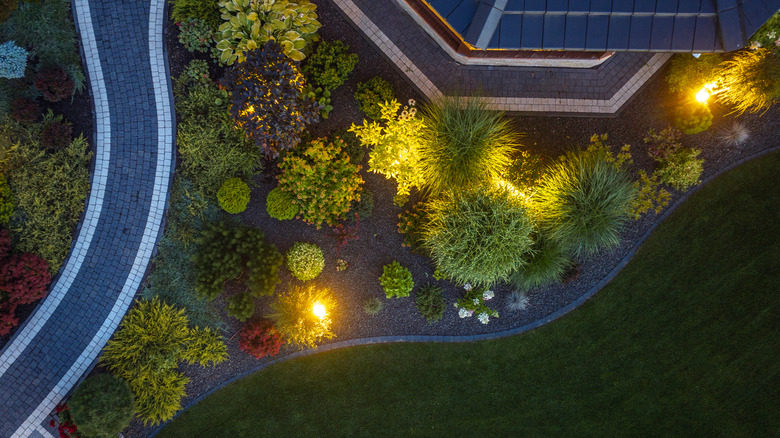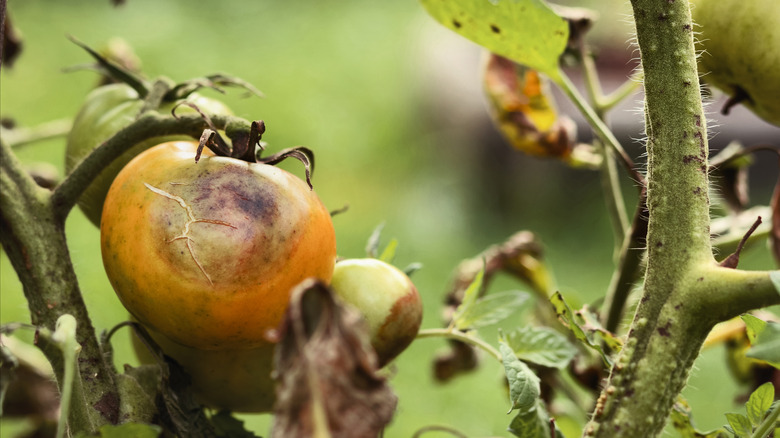Can AI Help You Effectively Plan And Design Your Garden?
If you're trying to design a new garden to refresh your backyard landscape while on a budget, you might not want to shell out for a landscape designer to help you figure out what you should plant this year. But finding the right plants and flowers for your space can be challenging — even for experienced gardeners. What if artificial intelligence could help?
Novice gardeners have been turning to AI platforms like ChatGPT in an attempt to plan their garden layouts effectively and inexpensively. Using image analysis, AI can help you determine what problems are present in your yard, which plants and trees already exist in your space (and how to care for them), and what greenery might suit your climate. It can even help you address common issues like weeds, pests, and plant diseases.
But, as always, there are some downsides to using AI for your dream garden, too. AI notoriously struggles with aspects of image generation, which can throw a wrench in your gardening layouts. It sometimes "hallucinates," or creates false information in an effort to answer a question it doesn't understand. In some cases, you might even be left doing a lot more fact-checking than you would if you had researched on your own. Here are a few of the things you should consider before using AI to help you plan your new backyard.
Potential pros of using AI as a gardening assistant
You can't deny that AI as a plant identification tool is very handy. When you struggle with determining what odd-looking plant has popped up in the corners of your yard (and whether it needs to be removed), you can take a picture for AI to analyze. If the photo is clear, it should be able to tell you what type of plant it is, give you care tips, or tell you if it needs to be removed from your yard. Many AI tools can even identify common plant diseases, pests, and tell you how to treat these issues.
AI is a great starting point for understanding what plants will go together in your yard, and many AI programs are capable of compiling information with unique specifications. For example, you might want to start by asking your AI platform of choice what plants would thrive in your area. Then, tell it how much shade or sunlight your backyard gets. You could also add on color requirements and companion planting ideas. This will help you narrow down specific plants that you can further research. AI can even help you plan a budget for your garden or find potential nurseries near you.
Many AI platforms are completely free to use, which is a highly accessible option for those who are hoping to plant their gardens without spending too much money. Expert advice can be expensive — the cost of hiring a garden designer starts at $80 per hour on average and goes up from there. That makes AI a pretty sweet deal.
Cons of using AI for garden design
As highlighted, one of the big issues with artificial intelligence is that it often struggles to produce realistic-looking photos. The photos that it creates may not be applicable to your space, while a designer can easily design your backyard based on how it actually looks. AI images might not even show you a realistic idea of what your chosen plants would look like together.
Another problem with using AI is the potential for false information. Don't follow AI's word on gardening advice without doing your own research first, as AI sometimes creates its own version of information if it can't otherwise fulfill users' requirements. Of course, there's also the fact that the concept of using AI can be troublesome for many because of the ethical issues it presents. Those who are focused on sustainability will balk at the notion that ChatGPT's user questions alone contribute to over 39 million gallons of daily water usage. Some AI programs may also train on artists and photographers' images without their consent, so the gardening photos you produce using AI could be comprised of stolen work.
Regardless of whether you decide to use AI or not, backing up any AI-generated research with scientifically supported evidence is always important — or else you might end up with plants that just can't grow in your climate, no matter how hard you try.


